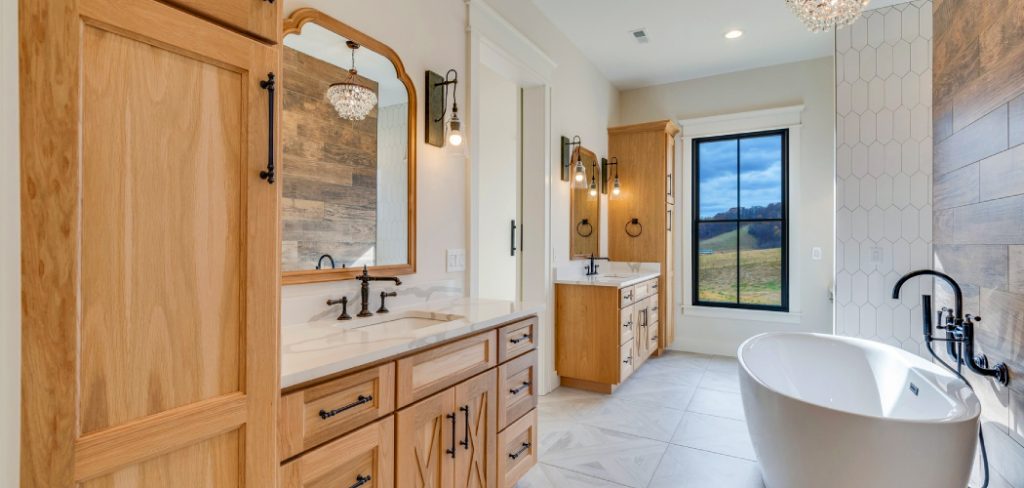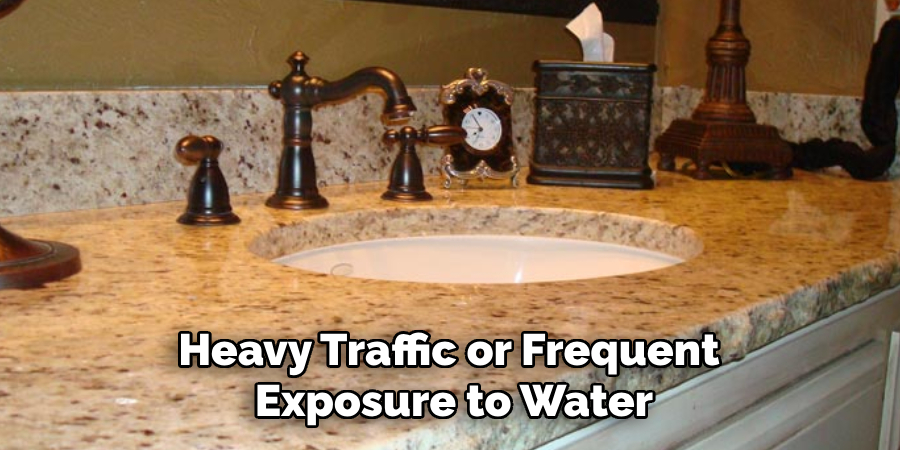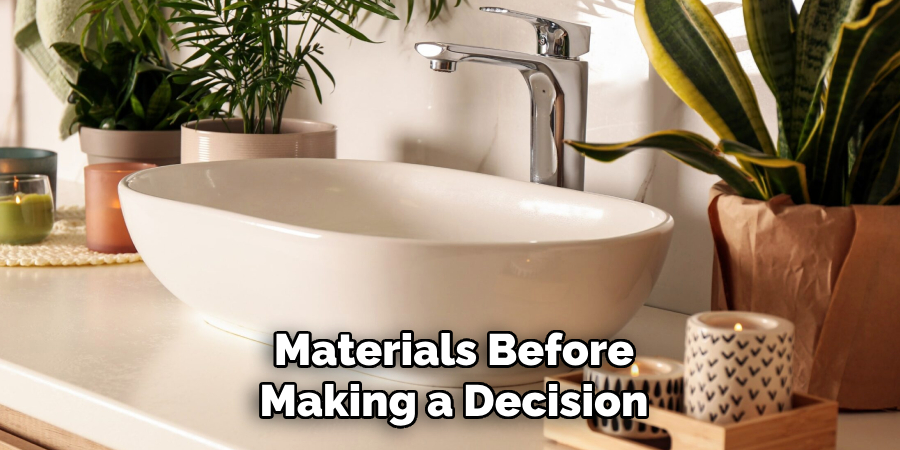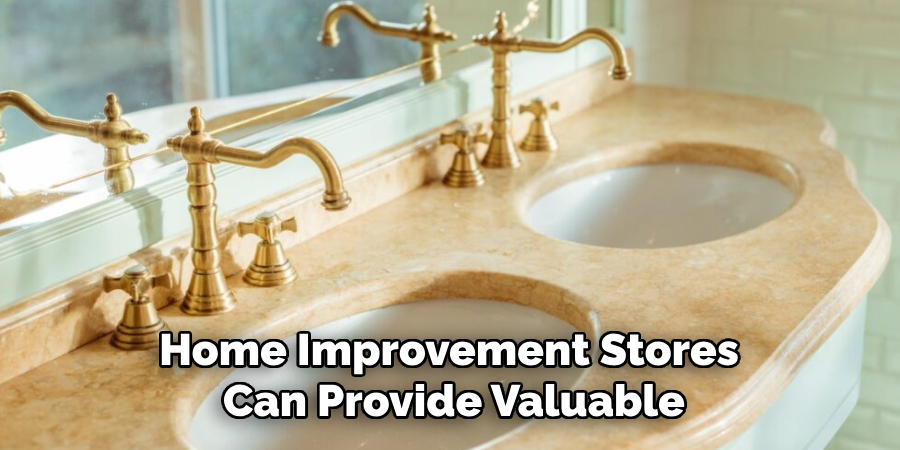Choosing the right material for your bathroom counter is an important decision that can impact both the functionality and aesthetic appeal of your space. With so many options available, it’s essential to understand the characteristics of each material to find one that suits your needs, budget, and style. Whether you’re looking for durability, easy maintenance, or a luxurious finish, the right choice can transform your bathroom into a more practical and visually pleasing environment.

In this blog post on How to choose a bathroom counter material, we will discuss the various factors to consider while making this decision and provide insights into some of the most popular materials used for bathroom counters.
Factors to Consider
Before delving into the different materials, let’s first discuss the key factors you should keep in mind while choosing a bathroom counter material:
1. Durability
Since bathrooms are high-traffic areas that are exposed to water, steam, and other elements, it’s crucial to choose a material that can withstand these conditions. Some materials are more durable than others, so consider the wear and tear your counter will endure before making your decision.
2. Maintenance
Another important factor to consider is how easy or difficult it is to clean and maintain the chosen material. Some materials require regular sealing or special cleaning products, while others are low-maintenance and resistant to stains and scratches.
3. Budget
Your budget will also play a significant role in determining which material you choose for your bathroom counter. While some materials may be more expensive upfront, they may have a longer lifespan and require less maintenance, making them a cost-effective option in the long run.
4. Style
Lastly, consider the overall style of your bathroom and choose a material that complements it. Whether you’re going for a modern or traditional look, there are various materials available to suit any design aesthetic.
Needed Materials
Now, let’s take a closer look at some of the most popular materials used for bathroom counters and their unique characteristics:
Granite:
Granite is a natural stone that is both durable and visually appealing, making it a popular choice for bathroom counters. It comes in a range of colors and patterns, giving your bathroom a unique and luxurious feel. However, regular sealing may be required to prevent staining.
Quartz:
Quartz is a man-made material that offers the durability of natural stone with added resistance to stains and scratches. It’s available in various colors and patterns, making it easy to find one that fits your style. While it may be more expensive than other materials, its low maintenance makes it a cost-effective option in the long run.
Marble:
Marble has been used for centuries in bathrooms and is known for its elegant and timeless appearance. However, it is porous and can be prone to staining, so regular sealing is recommended. It also requires gentle cleaning products to avoid damage.
Solid Surface:
Solid surface materials like Corian or Staron offer a seamless look with no visible seams or grout lines. They are also non-porous, making them resistant to stains and bacteria. However, they can be prone to scratches and may require professional repair if damaged.
Laminate:
Laminate is a budget-friendly option that comes in various designs and colors, mimicking the look of natural stone at a lower cost. While it’s not as durable as other materials, proper care can help extend its lifespan.
Concrete:
Concrete is a trendy and unique option for bathroom counters, offering a modern and industrial look. It can be customized with different colors, textures, and finishes, but it may require regular sealing to maintain its appearance.
7 Simple Step-by-step Guidelines on How to Choose a Bathroom Counter Material
Step 1: Determine Your Budget
The first step in choosing a bathroom counter material is to establish your budget. Knowing how much you’re willing to spend will help narrow down your options and ensure you don’t overspend on your renovation. Keep in mind that the cost of materials can vary widely, from affordable options like laminate to more expensive choices like marble or quartz.

Don’t forget to factor in additional costs, such as installation, maintenance, or any customizations you may want. By setting a clear budget upfront, you can make an informed decision that balances cost and quality.
Step 2: Assess Your Needs and Lifestyle
Consider your lifestyle and how you use your bathroom when choosing a counter material. Do you have young children who may be prone to spills or accidents? Are you someone who enjoys spending time doing hair and makeup in the bathroom and needs a durable and low-maintenance surface?
Or are you looking for a luxurious, high-end look for your master bathroom? These factors will play a significant role in determining the most suitable material for your needs.
Step 3: Consider Durability and Maintenance
As discussed earlier, durability and maintenance should be top considerations when selecting a bathroom counter material. If you anticipate heavy traffic or frequent exposure to water, steam, or heat, you’ll want to choose a material that can withstand these conditions.

Additionally, consider how much time and effort you’re willing to put into maintenance. If you prefer a low-maintenance option, materials like quartz or solid surface may be ideal choices.
Step 4: Think About Your Design Aesthetic
Your bathroom counter material should reflect and enhance the overall design aesthetic of your bathroom. Consider the color scheme, fixtures, and style of your space when making your selection. For example, if you’re aiming for a modern, minimalist look, materials like quartz or concrete with sleek finishes and neutral tones could be ideal.
For a classic or traditional bathroom, marble or granite with natural veining can add timeless elegance. On the other hand, laminate offers versatile design options and can mimic the appearance of pricier materials to suit various styles at a lower cost. Ensure the material you choose complements the rest of the bathroom’s elements to create a cohesive and visually appealing space.
Step 5: Research and Compare Materials
With so many options available, it’s essential to research and compare materials before making a decision. Look into the pros and cons of each material, including their durability, maintenance requirements, and cost. Consider also reading reviews from other homeowners who have used the materials in their bathrooms for real-life insight.

Comparing different materials side by side can help you visualize how they would look in your bathroom and make an informed choice.
Step 6: Visit Showrooms or Request Samples
Seeing the materials in person can give you a better sense of their color, texture, and overall appearance. Many home improvement stores offer samples of various materials, allowing you to take them home and see how they would look in your space.
If possible, visit showrooms or design centers that have the materials on display in a bathroom setting. This will give you a more realistic idea of how they’ll look and function.
Step 7: Consult with Experts
If you’re still unsure about which material to choose, don’t hesitate to seek advice from experts. Interior designers, contractors, or even sales associates at home improvement stores can provide valuable insights and help guide you toward the best option for your specific needs and budget.

Following these steps on How to choose a bathroom counter material can make the process of choosing a bathroom counter material less overwhelming and ensure you end up with a durable, functional, and visually appealing addition to your space. So take your time, do some research, and choose the material that best meets your needs and adds to the overall aesthetic of your bathroom. Happy renovating!
Additional Tips:
- When considering natural stone materials like marble or granite, keep in mind that they may require regular sealing to prevent staining and maintain their appearance.
- If you’re on a tight budget but still want the look of natural stone, consider using it as an accent piece instead of covering the entire counter.
- Remember to prioritize durability and maintenance over solely aesthetic appeal, as your bathroom is a high-traffic area and needs to withstand daily use.
- Don’t be afraid to mix and match materials for a unique and personalized look. For example, you could use quartz for the main counter surface and incorporate a wood or concrete accent piece for a touch of warmth and texture.
- Think about future resale value when choosing a material. While it’s essential to love the look of your bathroom counter, it’s also wise to consider how it may impact the overall value of your home in the long run.
Frequently Asked Questions
Q: Can I Install a Bathroom Counter Myself?
A: It’s recommended to hire a professional for installation, especially if you’re using heavy materials like granite or concrete. A poorly installed counter can lead to future damage or issues.
Q: How Often Do I Need to Seal My Bathroom Counter?
A: The frequency of sealing depends on the material used and the amount of wear and tear your bathroom counter endures. Generally, granite and marble should be sealed every 6-12 months, while quartz may only require sealing every few years.
Q: Are There Eco-Friendly Options for Bathroom Counters?
A: Yes, there are various environmentally friendly materials available for bathroom counters, such as recycled glass and bamboo. These options not only reduce waste but also offer unique and stylish designs.
Conclusion
Choosing the right bathroom counter material is a decision that requires careful consideration of factors such as durability, maintenance, budget, and style. Each material has its own set of advantages and drawbacks, so it’s important to evaluate your specific needs and preferences before making a selection.
Whether you opt for the timeless elegance of marble, the durability of quartz, or the budget-friendly appeal of laminate, taking the time to research and plan will ensure your bathroom counter not only meets your functional requirements but also elevates the aesthetic of your space. Thanks for reading this article on How to choose a bathroom counter material.

